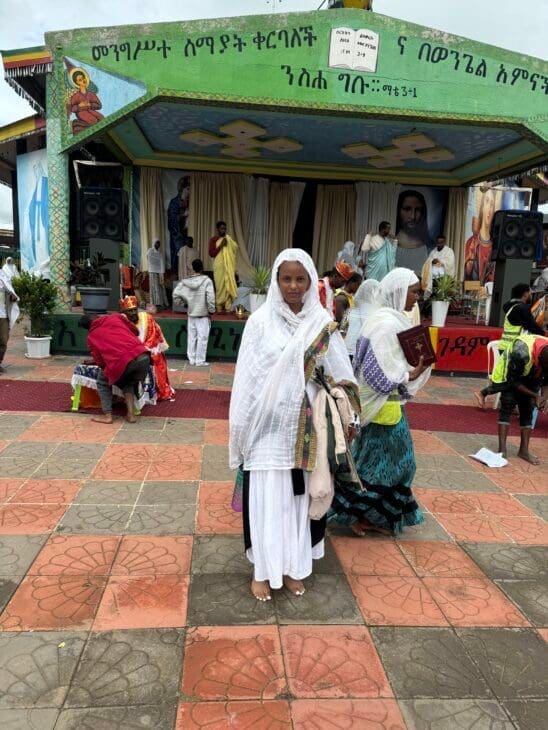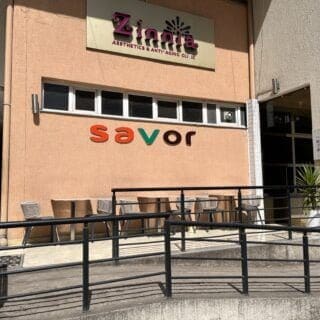A Pilgrimage to St. Kidane Mihret Church Ethiopia

Ethiopia, a land of ancient history and diverse cultures, is renowned for its deep-rooted Christian heritage. St. Kidane Mihret Church in Debre Berhan stands out among Ethiopia’s many religious sites as a beacon of faith and tradition. This blog explores the church’s significance to the Ethiopian Orthodox Tewahedo Church. It also offers a glimpse into the practices, prayers, and vibrant community life that thrive within its walls.
The Historical Tapestry of Debre Berhan
Debre Berhan, a town in the central highlands of Ethiopia, boasts a rich history and deep religious significance. Emperor Zara Yaqob founded the town in the 15th century and named it ‘Mountain of Light. This emperor, known for his piety, played a crucial role in strengthening Christianity and shaping the region’s religious development. His establishment of Debre Berhan marked the town as a significant religious center, a status it maintains to this day.
Numerous churches and monasteries dot the town’s spiritual landscape, each contributing to the rich tapestry of Ethiopian Orthodoxy. Among these, St. Kidane Mihret Church holds a special place. Both for its architectural beauty and its dedication to the theme of divine mercy.
The Legacy of Kidane Mihret
Kidane Mihret, meaning “Covenant of Mercy,” is a central theme in Ethiopian Orthodox Christianity. This concept emphasizes God’s compassion and mercy towards humanity, a fundamental tenet of the faith. Churches dedicated to Kidane Mihret, like the one in Debre Berhan, hold deep spiritual meaning. The faithful gather here to seek mercy and intercession.
Ethiopian Christianity—one of the world’s oldest Christian traditions—shares its history with St. Kidane Mihret Church. King Ezana of Axum declared Christianity the state religion in the early 4th century, marking its deep roots in Ethiopia. The church’s architecture, liturgy, and religious practices reflect centuries of devotion and cultural continuity.
The Architecture and Art of St. Kidane Mihret Church
Ethiopian Orthodox churches display distinctive styles, often featuring circular or octagonal shapes, central domes, and richly decorated interiors. St. Kidane Mihret Church is no exception. Its design includes a central dome symbolizing heaven and ornate interiors that tell stories of faith through iconography and frescoes.
Inside the church, vibrant religious artwork depicting biblical scenes, saints, and angels greets visitors. Painted in vivid colors, these frescoes help the faithful visualize the stories and teachings of the Bible. The iconostasis, a screen adorned with icons that separates the sanctuary from the nave, is another notable feature. It is a focal point during liturgical services. Highlighting the sacredness of the altar area.

Daily Life and Worship at St. Kidane Mihret Church
St. Kidane Mihret Church bustles with daily services and events that draw both locals and pilgrims. The Ethiopian Orthodox liturgy, or Qidasse, forms a central part of worship. It includes prayers, hymns, and Bible readings. Priests conduct these services in Ge’ez, an ancient liturgical language that adds a sense of timelessness to the rituals.
Daily Services:
Daily services at St. Kidane Mihret Church include morning and evening prayers, as well as the daily liturgy. These services shape the community’s spiritual rhythm, offering daily moments for prayer and reflection. The faithful gather to participate in these services, reciting prayers, singing hymns, and listening to readings from the Bible.
Sunday Mass:
The Sunday Mass is the highlight of the weekly religious calendar. During this time, the community gathers in larger numbers to celebrate the Eucharist—a central sacrament in Ethiopian Orthodox Christianity. The liturgy is often accompanied by chanting and the use of traditional musical instruments, creating a rich, immersive worship experience.
Special Prayers and Intercessions:
One distinctive feature of St. Kidane Mihret Church is its focus on prayers for mercy and intercession. Devotees specifically pray to Kidane Mihret, seeking God’s compassion and forgiveness. These prayers often include requests for personal healing, protection, and blessings. The faithful offer intercessory prayers to saints, particularly the Virgin Mary, who holds a special place in Ethiopian Orthodox devotion.
Festivals and Feasts:
Festivals and feast days are an integral part of the religious life at St. Kidane Mihret Church. The feast day of Kidane Mihret is a significant celebration, marked by special liturgical services, processions, and communal feasts. Ethiopians celebrate Timkat, or Epiphany, with great fervor. Commemorating the baptism of Jesus in the Jordan River. During these times, the church becomes a hub of activity. With pilgrims and locals participating in prayers, rituals, and festive gatherings.
Pilgrimage and Spiritual Retreats
For Ethiopians and pilgrims worldwide, St. Kidane Mihret Church offers a place for spiritual renewal and retreat. Devout individuals make pilgrimages to the church with reverence, seeking to strengthen their faith and connect with the divine.
Pilgrimages:
Pilgrims approach St. Kidane Mihret Church with anticipation and spiritual preparation. Pilgrims may undertake journeys on foot, reflecting the traditional practice of pilgrimage as a physical and spiritual endeavor. Upon arrival, they join prayers, attend services, and reflect quietly within the church’s serene surroundings.
Fasting and Prayer:
Fasting plays a major role in Ethiopian Orthodox spirituality, with several fasting periods each year. During these times, individuals may spend extended periods in prayer and reflection at St. Kidane Mihret Church. Seeking spiritual renewal and a closer connection to God.
Community and Social Gatherings
St. Kidane Mihret Church is not just a place of worship but also a center for community life. The church runs social and charitable programs that strengthen community bonds and support those in need.
Community Prayers:
It also hosts community prayer sessions where the faithful pray for well-being, peace, and prosperity. These gatherings foster a sense of solidarity and shared spiritual purpose.
Charitable Activities:
Charity is an integral part of the church’s mission. Acts of charity, such as feeding the poor, providing shelter to the homeless. The church community regularly supports the sick and elderly. These activities reflect the teachings of the Ethiopian Orthodox Church on compassion and service to others.
Personal Prayers and Devotions
In addition to communal worship. St. Kidane Mihret Church provides a space for personal prayers and devotions. Individuals come to the church to seek solace, offer thanks, and present their personal petitions to God.
Candle Lighting:
Lighting candles is a common practice at the church, with each candle representing a prayer or intention. The flickering lights create a serene and contemplative atmosphere, inviting personal reflection and devotion.
Confession and Repentance:
Confession is an important sacrament in the Ethiopian Orthodox Church. Visitors may confess their sins to a priest here and seek absolution through prayer and penance. This practice underscores the church’s emphasis on repentance and divine forgiveness.

Learning and Catechism
St. Kidane Mihret Church is also a center for religious education. Providing catechism classes for children and adults. These classes teach the doctrines and practices of the Ethiopian Orthodox faith, ensuring that future generations inherit this spiritual heritage.
Religious Education:
The church offers catechism programs that teach its history, theology, and liturgical traditions. These programs are vital for nurturing a deep understanding of the faith and fostering a strong spiritual foundation.
Conclusion: A Timeless Journey of Faith
Visiting St. Kidane Mihret Church in Debre Berhan is not only a physical journey but also a spiritual one. It is a journey into the heart of Ethiopian Orthodoxy, where ancient traditions and contemporary faith converge. With its history, vibrant community, and deep spiritual meaning, the church reflects Christianity’s enduring legacy in Ethiopia.
Walking through its doors, you enter a sacred space where prayers, hymns, and pleas for divine mercy have filled the air for centuries. It is a place where the past meets the present. Here, every visitor—local or pilgrim—can connect with the timeless message of faith, hope, and compassion that defines Ethiopian Orthodox Christianity.
Whether drawn by curiosity or devotion, you will find the church leaves a lasting impression. A desire for personal renewal, or a quest for deeper understanding, St. Kidane Mihret Church offers a welcoming embrace. It welcomes you to join the many who have found solace, inspiration, and renewed purpose within its walls.
An ancient Ethiopian prayer says, “May the grace of our Lord be with us always, guiding our steps and filling our hearts with peace and joy.”
On your pilgrimage to St. Kidane Mihret Church, may you receive the blessings and spiritual richness this sacred journey offers.


